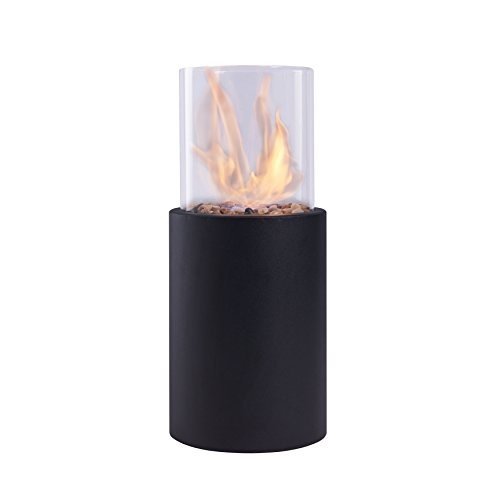10 Misconceptions Your Boss Has Regarding Outdoor Stoves Online
Best Value Fireplaces: An In-Depth Guide
The fireplace has long been related to as the heart of a home, offering warmth, atmosphere, and a centerpiece for social events. Nevertheless, navigating through various options can be overwhelming, particularly with budget restrictions in mind. This post presents an informative guide on the very best value fireplaces, detailing their types, features, and advantages to help property owners make a smart choice.
Types of Fireplaces
Fireplaces come in a variety of designs and types, each with different qualities, costs, and benefits. Here's a detailed appearance at the most typical types of fireplaces readily available in the market today.
Kind of Fireplace
Description
Average Cost
Pros
Cons
Wood-Burning
Burn logs to produce heat and ambiance.
₤ 1,500 – ₤ 5,000
Genuine experience, natural heat
Requires routine maintenance, less efficient
Gas Fireplaces
Utilizes gas or propane to produce heat.
₤ 2,000 – ₤ 5,000
Easy to use, cleaner than wood
Restricted to gas supply, setup expenses
Electric Fireplaces
Mimics flames with LED innovation and produces heat via electrical energy.
₤ 200 – ₤ 3,000
Easy installation, installation flexibility
Less genuine feel, greater operating costs
Pellet Stoves
Use compressed wood or biomass pellets, supplying an eco-friendly option.
₤ 3,000 – ₤ 4,500
Efficient, low emissions
Requirements electricity to operate, needs storage for pellets
Ethanol Fireplaces
Burns ethanol fuel, producing flames that don't need a chimney.
₤ 300 – ₤ 2,500
No vents required, portable
Greater fuel cost, security concerns
Elements to Consider When Choosing a Fireplace
Selecting the ideal fireplace is not practically looks; it likewise includes useful considerations. Here are essential aspects to bear in mind:
1. Budget
- Identify just how much you are ready to spend. Remember that installation and maintenance costs can include up.
2. Space and Size
- Guarantee the fireplace fits well within the room, considering both the space offered and the heating requirements.
3. Fuel Type
- Choose on the fuel source based upon accessibility, expense, and the type of atmosphere you want to attain.
4. Efficiency
- Choose systems with high-efficiency scores to ensure you are getting the most value for your money in regards to heat output.
5. Visual Appeal
- Choose a style and style that matches existing decoration and boosts the overall charm of the space.
6. Laws
- Know local guidelines, allows, and building regulations that may impact your fireplace installation.
Top Best Value Fireplaces
Based on client reviews, professional opinions, and general value for cash, here are some of the very best value fireplaces presently available in the market:
1. DuraVent Pellet Stove
- Type: Pellet
- Average Cost: ₤ 2,000
- Emphasizes: Highly efficient with low emissions, making it an excellent choice for environmentally-conscious property owners.
2. Napoleon B36NTR-1
- Type: Gas
- Typical Cost: ₤ 2,500
- Highlights: This fireplace is visually enticing and extremely efficient, with a sleek design and adjustable flame.
3. Duraflame Electric Heater Stove
- Type: Electric
- Average Cost: ₤ 200
- Highlights: Affordable and portable, ideal for smaller sized spaces or adding ambiance to a space without long-term installation.
4. Genuine Flame Juliet Gel Fireplace
- Type: Ethanol
- Average Cost: ₤ 300
- Emphasizes: A trendy option for modern areas that requires no venting, making it versatile and simple to set up.
5. Vogelzang VG5790
- Type: Wood-Burning
- Typical Cost: ₤ 800
- Emphasizes: Offers a traditional wood-burning experience with a smooth modern design, perfect for those who treasure the timeless atmosphere.
Often Asked Questions (FAQs)
Q1: What is the most cost-effective fireplace alternative?
A1: Electric fireplaces tend to be the most cost-efficient in regards to preliminary purchase price and setup, however can have greater operating costs compared to gas or pellet units.
Q2: Are gas fireplaces much safer than wood-burning fireplaces?
A2: Yes, gas fireplaces generally produce less emissions and position a lower threat of chimney fires as they do not produce creosote like wood-burning systems.
Q3: Can I set up a fireplace myself?
A3: While some electric fireplaces permit simple self-installation, other types, particularly gas and wood-burning designs, typically require expert setup due to venting and security issues.
Q4: How do I maintain my fireplace?
A4: Regular maintenance includes cleaning up the chimney (for wood-burning fireplaces), looking for gas leaks (in gas units), and making sure appropriate ventilation for electric designs.
Q5: Is an ethanol fireplace a good option?
A5: Ethanol fireplaces are appealing for their modern style and ease of installation. However, they can be less efficient and more expensive to run long-term compared to other fuel types.
Selecting a value fireplace that meets your aesthetic choices and practical requirements includes extensive research study and consideration. By understanding various types of fireplaces, their associated costs, and benefits, homeowners can make educated decisions that will not just fit their budget plan however likewise improve the warm and welcoming atmosphere of their homes. Whether going with www.fireplacesandstove.com , gas, wood-burning, pellet, or ethanol design, the best fireplace waits for to change your living space.
